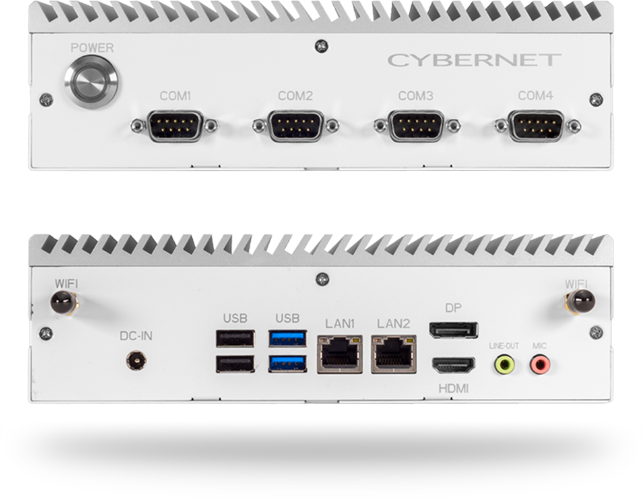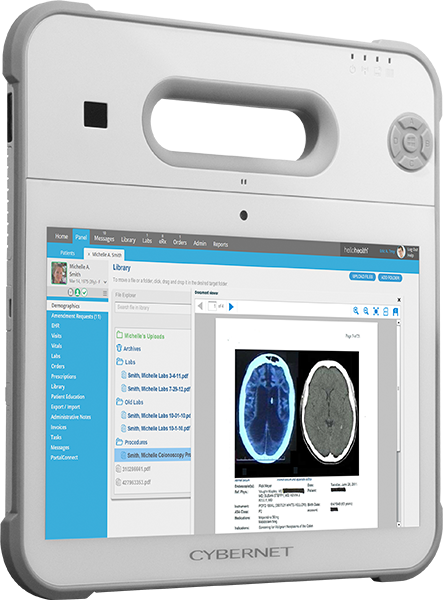The introduction of electronics has revolutionized many industries, not only making tasks easier but signaling a massive transformation in how things are done. For healthcare, digital transformation has forever changed patient care, affecting everything from how patients are scheduled to how providers deliver medical treatment.
- Digital Transformation in Healthcare: An Overview
- Key Technologies Driving Healthcare's Digital Transformation
- Benefits of Digital Transformation in Healthcare
- Navigating the Digital Landscape: Common Challenges & Solutions
What is Digital Transformation in Healthcare?
Digital transformation is the use of electronics and other digital technologies to transform business processes, culture, and customer experiences. Electronics like computers, the software that runs on them, and networks are examples of such technologies.
So, what is digital transformation in healthcare? Here, technologies like medical computers and QR codes aim to transform modern medicine's practices and processes. Unsurprisingly, most involve patient care in one form or another.
Digital transformation usually breaks down into four main areas:
- Process Transformation brings greater efficiency and effectiveness to an industry's traditional operations. An example in healthcare is the replacement of paper patient files with electronic medical records (EMR).
- Business Model Transformation looks to transform those operations. Remote Patient Monitoring (RPM) can be seen as an example for the healthcare industry. With it, providers and staff can keep track of several patients at once without meeting physically. This dramatically expands the provider's patient panel without loss of care.
- Domain Transformation redefines an industry's products and services. Retail health clinics, urgent care centers, and other alternatives for non-emergency care are examples of Domain Transformation.
- Cultural/Organizational Digital Transformation involves those technologies that upend an industry's standard processes. In healthcare, they would include artificial intelligence and remote surgeries through robots.
Key Technologies Driving Healthcare's Digital Transformation
Healthcare is a sprawling, multi-trillion-dollar industry. Dozens of technologies are easily involved in its digital transformation. The following are five prominent ones.
Telemedicine
Telemedicine (and its subset, telehealth) connects patients and providers in real-time via remote technologies like video. Elderly, hospice patients, and those who suffer mobility issues can get medical care without leaving the comfort of their homes.
Artificial Intelligence
Artificial intelligence (AI) is a technology that simulates human thinking: learning, comprehension, analysis, etc. Healthcare, which generates enormous amounts of data, has found many uses for AI. Medical AI box PCs, for example, can view thousands of lesion images from a colonoscopy and learn to identify them in future cases.
Precision Medicine
Precision medicine tailors treatment based on the patient's genetics, environment, and lifestyle. This approach ensures a far better outcome for that patient than the broader ones used by traditional treatments. Involved technologies include gene-splicing, targeted medications, and AI.
Internet of Medical Things (IoMT)
Internet of Things (IoT) connects "things" like sensors, software, and computers through the Internet into a vast network. IoMT is a subset of IoT, linking RPM, smart hospital rooms, and other medical devices and applications through online healthcare networks. Monitoring multiple patients at once by a few staff members is one application of the technology.
Robotics
Robotics in healthcare finds many uses, from assisting surgeons when performing complex and delicate operations to aiding patients with disabilities.
Benefits of Digital Transformation in Healthcare
Digital technologies have numerous positive impacts on medicine.
- Manages routine but necessary non-medical tasks: appointment scheduling, patient record management, medical information, billing, etc. This increases efficiency as medical staff can focus on direct patient care and comfort.
- Allow faster access to patient records and test results, reducing wait time in diagnosis and treatment.
- Ensure high-quality care for patients even from a distance.
- Increase efficiency as AI triages simple medical cases, allowing providers and medical staff to handle more complex ones.
- Update EMR and providers' SOAP Notes more quickly, thoroughly, and in real-time, giving providers the time to continue providing high-quality health care even as their patient panels increase in numbers and complexity.
- Thanks to predictive analytics, resources like hospital beds and workers can be proactively managed, lowering costs without sacrificing quality.
Navigating the Digital Landscape: Common Challenges & Solutions
Transformation is not without hiccups, especially in an industry as entrenched as healthcare. The following are some common challenges medical groups face, along with their solutions.
Patient Safety
More electronics around patients could pose risks to them. Medical devices and equipment certified as medical-grade can reduce such risks and ensure patients' well-being.
Data Privacy & Cybersecurity
Patient data is protected by many regulations, like HIPAA. RFID readers and Imprivata Single Sign-On are just a few cybersecurity features protecting patients' privacy as the healthcare industry continues to digitalize.
Legacy System Integration
Many medical facilities rely on a hodgepodge of modern and legacy applications and equipment. Medical box PCs and similar digital technologies can bridge the gap between them thanks to compatible I/O COM ports.
Continuous Operation
Hospitals operate 24/7 and expect the same from their equipment. Medical PCs built with fanless cooling, rugged design, and low failure rates can provide such reliability.
Interoperability
Information, from patient EMR to insurance invoices, is scattered across "data" silos that medical groups need but do not have direct access to. Third-party companies and medical computers with COM ports can help connect such diverse systems.
Charting a Healthier Future with Digital Transformation with Cybernet
Digital transformation in healthcare brings change throughout the healthcare industry thanks to modern electronics and networks. Electronic medical records, telemedicine, and artificial intelligence have significantly changed once-established practices, though some have also brought challenges.
Are you interested in learning about digital transformation in healthcare and how it'll impact your medical group? Contact an expert here at Cybernet for more info. We'll be happy to review how those technologies involve our medical-grade computers and tablets and how they can benefit your medical groups and facilities.


